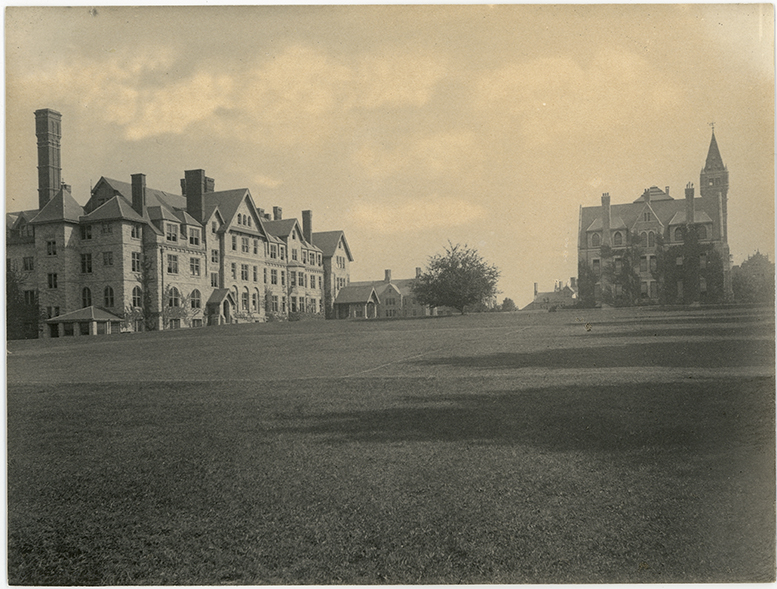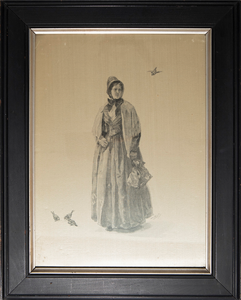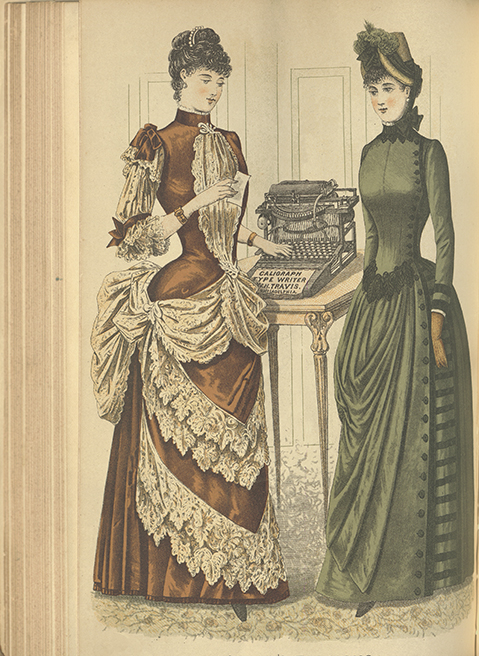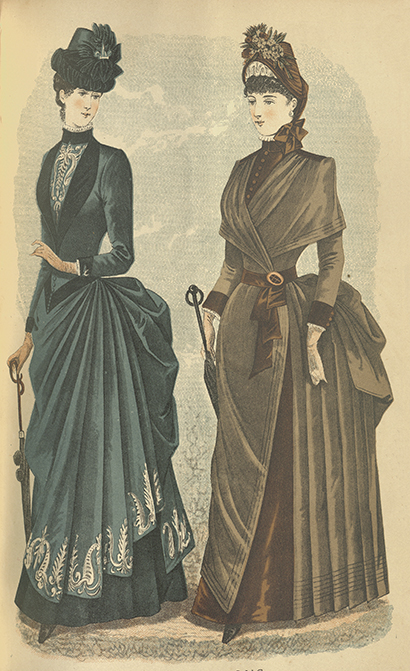Taylor Hall is built in the High Victorian Gothic style, which was popular for nineteenth-century British and American colleges, churches, and state buildings. However, Taylor was built in a monochrome gray stone, which deviates from the emphatic polychromy that was typical of the style. Quaker conventions of plain dress influenced the design of Bryn Mawr’s architecture as well as the ideal image of its student. Francis King’s desire for Hutton to capture the ideal of “Quaker Lady Dress” in the design of Taylor Hall may have been a self-conscious play on the term “dress,” which can refer both to a person’s clothing and to the decoration of a building. Just as Bryn Mawr’s founders dressed the campus in a reserved version of High Victorian Gothic style, Joseph Taylor specified in his will that Bryn Mawr students should wear simple clothing and avoid jewelry or frivolous fashions. The refined simplicity of Taylor Hall communicated the guarded education the College would provide.

after 1894. Bryn Mawr College Special Collections, PAB_Taylor_020.
“There is a certain style of ‘Quaker lady’ dress, which I often see in Phila, which tells the whole story—she has her satin bonnet—her silk dress—her kid gloves—her perfect slippers—but they are made to harmonize with the expression of her face which is both intellectual and holy—so may ‘Taylor College’ look down from its beautiful site upon the passing world and we hear them say ‘just right.’“
Francis King, letter to Addison Hutton, 1879. Quaker and Special Collections, Haverford College, Thomas Family Papers, MC-962.

Quaker Woman (Elizabeth Fry) with Birds, 19th century (?)
Wood engraving on gray silk, 13 in. x 9 1/2 in (33.02 cm x 24.13 cm).
Gift of Helen Dechert
Bryn Mawr College Special Collections, 1978.8
This young, Quaker woman, possibly Elizabeth Fry, is simply dressed in an unadorned gown, shawl, and bonnet. Yet, the glossy silk surface conveys the refinement of her clothing. Although today we associate Quakers with frugality, by the end of the nineteenth century, codes of Quaker simplicity permitted such luxuries so long as they avoided excess. Elizabeth Fry (1780-1845) devoted herself to prison and asylum reform.

“Godey’s Fashions,“ Godey’s Lady Book and Magazine, vol. 110, no. 657, March 1885
Bryn Mawr Special Collections, AP2.G56
The colorful, richly finished garments and accessories depicted in these nineteenth-century fashion plates (published in the year Bryn Mawr College opened) provide a sense of the “frivolous” fashions that Joseph Taylor rejected for Bryn Mawr students.

“Godey’s Fashions,“ Godey’s Lady Book and Magazine, vol. 110, no. 657, March 1885
Bryn Mawr Special Collections, AP2.G56
